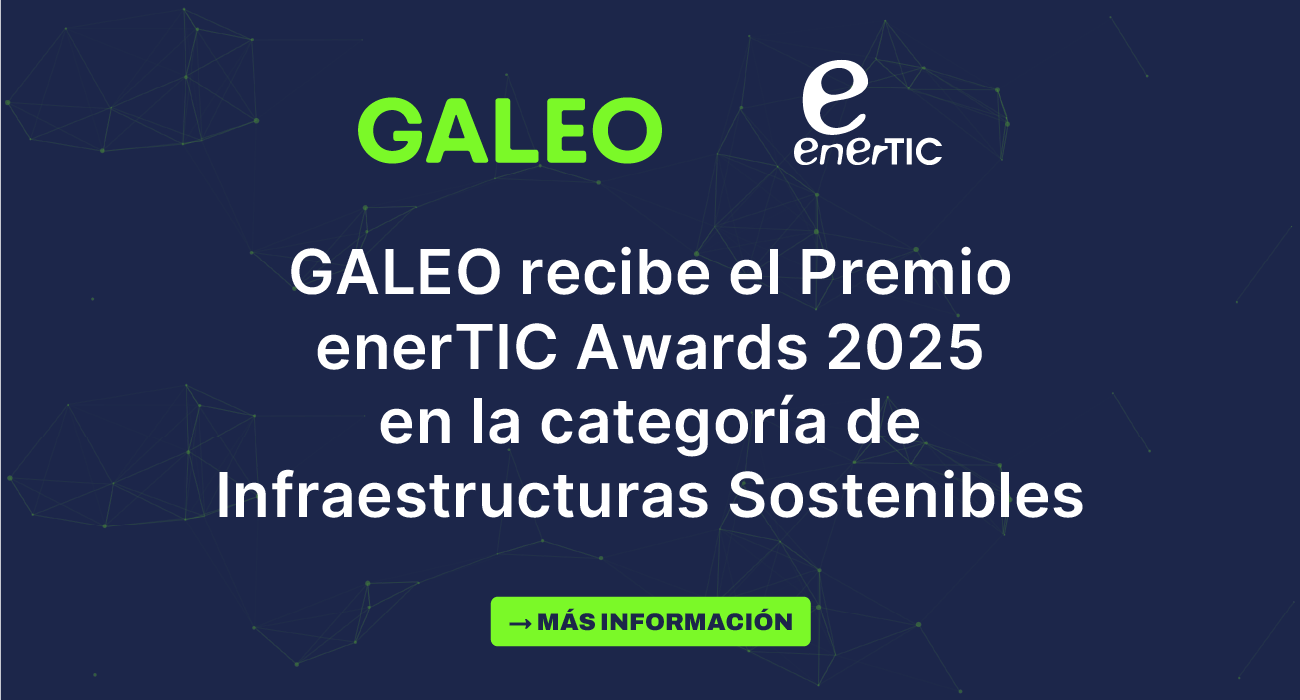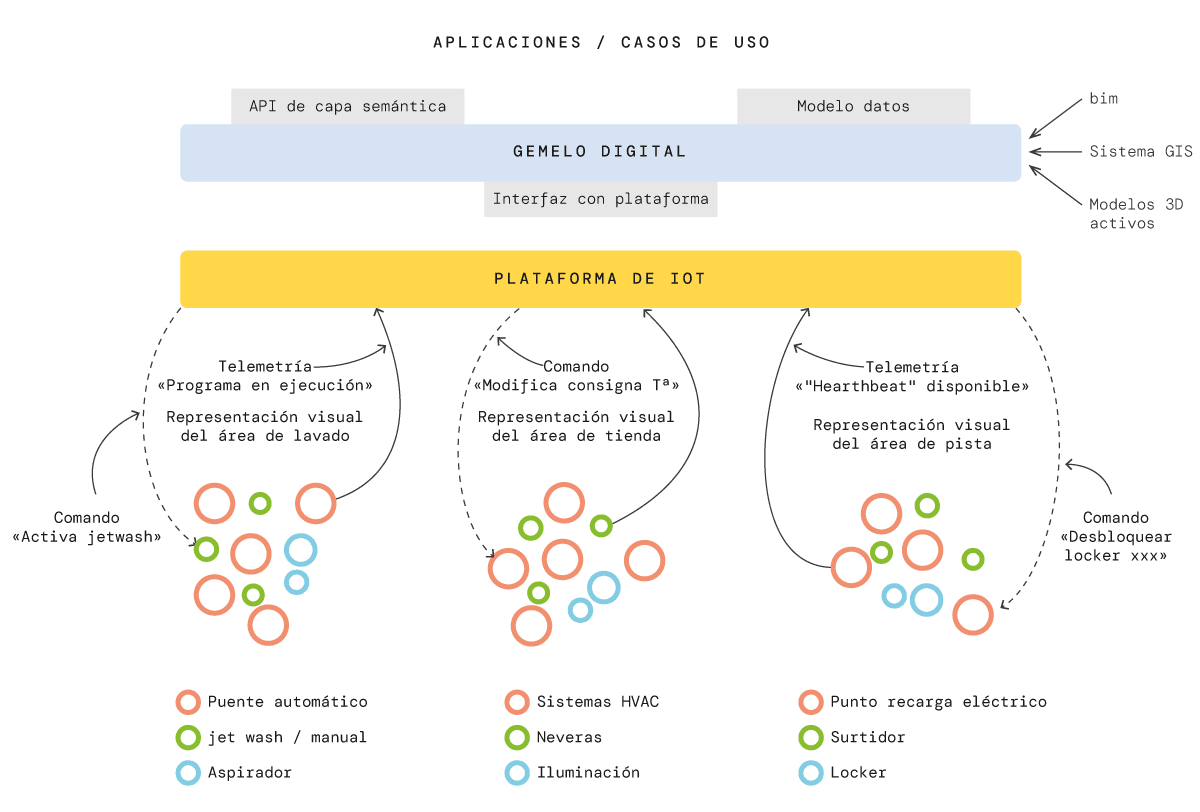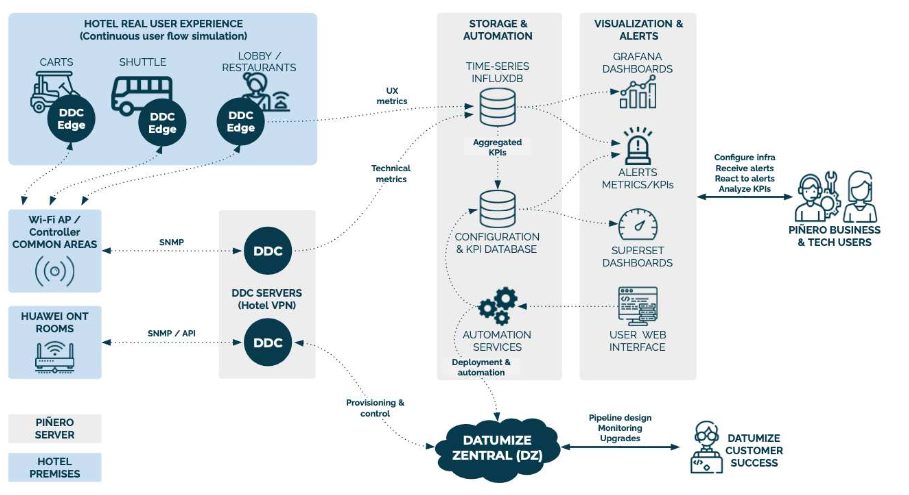Infrastructure & Buildings
Private companies and public entities are adopting the digitalisation of their infrastructures, prioritising those that need renovation or regulatory adjustment. This process encompasses improvements in energy management, operational efficiency, and user experience. The creation of a data model that integrates diverse assets and statuses is crucial for the implementation of advanced technologies and digital solutions. Digitalisation can involve the integration of sensors and real-time communication systems to optimise the management and maintenance of buildings and infrastructures, overcoming challenges such as lack of information and limited physical access.
The digitisation of infrastructures is essential for optimising their management and improving user experience, tackling challenges such as lack of information and limited physical access. This implies the creation of integrated data models and the incorporation of sensors and real-time communication systems to enhance operational efficiency and energy management.
- System integration
The interoperability between different systems, such as Building Management Systems (BMS), Computerised Maintenance Management Systems (CMMS) and Supervisory Control And Data Acquisition systems (SCADA), allows centralised and efficient management of all aspects of infrastructure.
- Efficient Energy Management
Technology can be used to monitor and control energy consumption in real time, allowing automatic adjustments to maximise efficiency and reduce costs.
- Predictive monitoring and maintenance
Integrated sensors in infrastructures and buildings can provide real-time data on the status of your assets, enabling early detection of problems and implementation of predictive maintenance to prevent costly failures.
- Intelligent Traffic Management Systems
By using sensors, cameras and data analysis systems, intelligent traffic management systems can be implemented that monitor real-time traffic conditions, identify congestion and optimise vehicle flows to improve flow and reduce travel times.
- Space Management
Occupancy tracking technology and data analysis can help optimise the distribution of space in buildings, facilitating a better use of resources and improving your user experience.
- Predictive road maintenance
The sensor technology installed on roads can detect the surface condition and predict the need for maintenance, such as pothole repairs or resurfacing, which helps to prevent accidents and reduces costs associated with reactive maintenance.
The digitisation of infrastructures and spaces provide tangible benefits to organisations that apply it:

Energy efficiency
Digitalisation allows for real-time monitoring and control of systems such as lighting, air conditioning and energy consumption. Smart sensors adjust the lighting and temperature based on presence and environmental conditions, reducing unnecessary consumption. This leads to a more efficient use of resources and significant savings in costs.

Efficient operations
Digitisation optimises operational efficiency by facilitating constant monitoring of equipment and systems. This enables early detection of potential issues and failures, allowing for more efficient preventive maintenance and repairs. The collection and analysis of real-time data contribute to reducing unplanned downtime and improving the overall productivity of the space.

Enhanced user experience
Smart technology allows for the personalisation of the user experience. Systems automatically adapt lighting, temperature and other conditions according to individual preferences, creating a more comfortable and welcoming environment. Furthermore, interaction with the facility’s services, such as device control and service requests, is simplified and accelerated, improving occupant satisfaction.

Future adaptability and flexibility
Digitisation creates a solid foundation for future improvements and the adoption of emerging technologies. This ensures that the space can adapt to changes in user needs and market trends with relative ease. By keeping up to date with technological innovations, the long-term value of the space increases.

Generating new business opportunities
The incorporation of smart technology can open up new business opportunities. For example, by “appifying” parking spaces with sensors, a new line of business has been created by allowing logistics companies to use these spaces for temporary storage. This demonstrates how digitalization can drive innovation and the generation of additional income.

Contribution to sustainable construction
The digitisation of spaces contributes to sustainable construction by optimising the use of resources and reducing energy consumption. By minimising waste and improving efficiency, digitised spaces better align with sustainability goals and respect for the environment.
However, the digitisation of spaces also presents challenges that must be addressed for successful implementation. Some of these challenges include the existing infrastructure, systems and devices interoperability, data security and privacy, costs and return on investment, and staff training.
At GALEO, we have the technology, methodology and resources necessary to successfully digitalise spaces and infrastructure and we can take advantage of the benefits of technology to improve their efficiency, operability and maintenance.
If you’re interested in digitising your space or infrastructure, we’re a message away to start collaborating together. Shall we chat?
Success Stories
GALEO & MSI
TwinPulse
Discover TwinPulse, GALEO innovative digital twin platform that integrates real-time data from IoT, BIM, GIS, ERP, and SCADA to optimize asset management. With advanced simulation, data analysis, and artificial intelligence capabilities, TwinPulse enhances operational efficiency, reduces costs, and minimizes risks across industries such as energy, manufacturing, healthcare, infrastructure, and more. Download the document and see how TwinPulse transforms data into strategic decisions, driving innovation and intelligent asset control. Take your management to the next level with GALEO!







